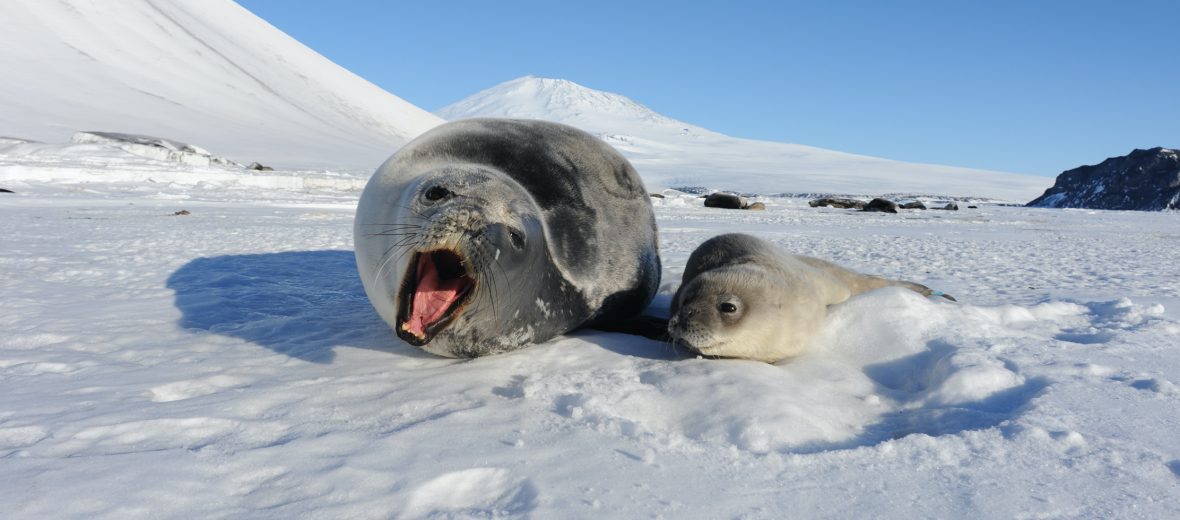
The Weddell seal can be found in the frigid waters and pack ice of Antarctica. They occasionally venture north to Africa, South America, and Oceania; but they tend to stick close to their birth place. They are not migratory, preferring to spend the freezing winters amongst the icy waters of Antarctica. Even though they face the threats of overfishing, habitat destruction, human interference, and climate change, these cool critters are still listed as Least Concern by the IUCN.
First the Stats…
Scientific name: Leptonychotes weddellii
Weight: Up to 1,320 lbs.
Length: Up to 11.6 feet
Lifespan: Up to 30 years
Now on to the Facts!
1.) A group of seals is called a bob, colony, harem, herd, pod, or rookery.
2.) Weddells spend their time individually. But sometimes gather into small colonies when food is present.
3.) On land, they rarely venture more than 9.84 feet from their ice hole.
4.) They are predominantly nocturnal (active at night). But exhibit diurnal (active during the day) activities.
5.) Underwater, these seals are very loud, with males being the loudest. These seal’s calls can be heard for up to 20 miles away!
But wait, there’s more on the Weddell seal!
6.) Even though they typically get enough water from the food they eat, sometimes they will eat snow.
7.) Being piscivores (eat fish and aquatic life), Weddells will consume an abundance of fish and squid.
Did you know…?
Not only can they dive up to 1,969 feet deep, but these seals can hold their breath for up to an hour!
8.) It is believed that Weddell seals are polygynous (1 male mates with several females).
9.) Females undergo up to a 10 month gestation (pregnancy) that yields a single pup; with twins being born on rare occasions.
10.) Pups are born predominantly precocial (self sufficient). But still rely on mom for milk, for up to 6 weeks.
But wait, there’s still more on the Weddell seal!
11.) Their population is estimated at around 1,000,000 wild individuals.
12.) They are named after the British Antarctic explorer, Sir James Weddell.
Did you know…?
Eating up to 110 lbs. of food each day is commonplace.
13.) Utilizing the claws on their front flippers, they scratch itchy spots and roll around on the ice to get to spots their claws can’t reach.
14.) These seals have a nictitating membrane that can cover their eyes. This aids in the protection from blowing snow and ocean salt.
15.) Weddell seals can spend long periods of time resting. Their body heat also causes an impression in the ice.
But wait, there’s still a little more on the Weddell seal!
16.) Orcas and leopard seals prey on Weddell seals.
17.) Males often bear scars from previous battles for breeding rights.
Now a Short Weddell Seal Video!
Be sure to share & comment below! Also, check out the Critter Science YouTube channel. Videos added regularly!
Want to suggest a critter for me to write about? Let me know here.
Think you know a lot about critters? Try your hand at these fun, free quizzes:



